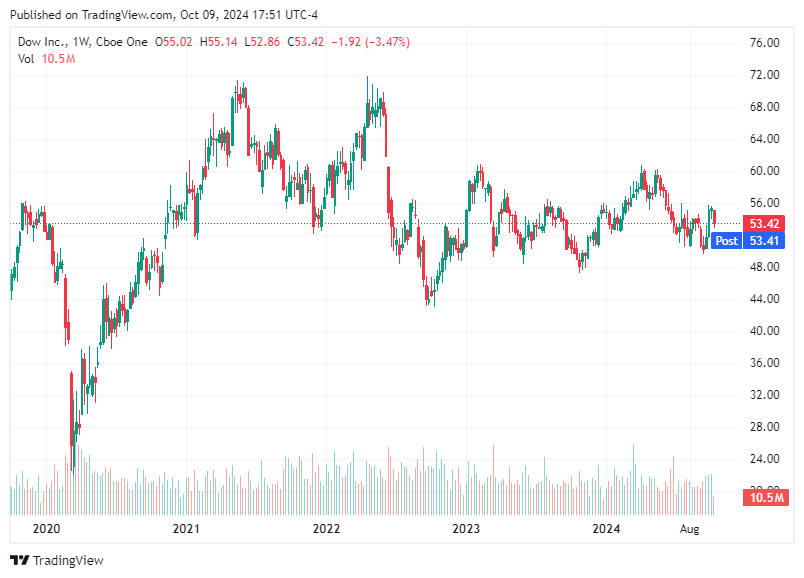Stock Region Market Briefing: Dow Jones Surges 400 Points
Glimpses of Market Resilience: Dow Jones Surges 400 Points Amid Economic Anticipation.

Disclaimer: This blog article is intended for informational purposes only. It does not constitute financial advice or recommendations for any specific investments. Readers should consult with a financial advisor before making any investment decisions.
The Dow Jones Industrial Average experienced a noteworthy surge, climbing over 400 points as investors eagerly anticipated the release of the Federal Reserve's meeting minutes. This robust market performance highlighted the investor community's keen interest in the Federal Reserve's economic outlook and potential policy shifts. Despite the upward trajectory of the major indexes, the market landscape remains complex, with multiple factors influencing investor sentiment and market direction.
Federal Reserve's Influence on Market Sentiment
The anticipation surrounding the Federal Reserve's meeting minutes stems from its recent decision to cut interest rates by 50 basis points—the first such reduction in over four years. This move signaled a proactive approach to sustaining economic growth amid global uncertainties. Investors are particularly focused on analyzing the meeting minutes to gauge the likelihood of future rate adjustments, especially in light of recent labor market data which portrayed a robust employment scenario.
Interest rate decisions by the Federal Reserve have a profound impact on market sentiment. Lower interest rates generally stimulate economic activity by reducing borrowing costs for consumers and businesses. As such, investors are keenly attuned to the Fed's communications, seeking insights into economic indicators that could influence monetary policy. The release of the meeting minutes allows investors to align their strategies with potential shifts in interest rates, affecting sectors ranging from technology to industrials. Amid the anticipation of the Federal Reserve's insights, technology stocks emerged as major contributors to the market's positive performance. Giants such as Microsoft, Amazon, and Apple each saw shares rise approximately 1%, bolstering the S&P 500 and Nasdaq Composite, which gained 0.7% and 0.6%, respectively. This upward momentum highlights the pivotal role of technology companies in driving market trends and investor confidence.
The performance of tech stocks often serves as a barometer for broader market health. Given their substantial weight in major indexes, gains in this sector can significantly influence overall market direction. Investors frequently look to technology companies for growth potential, particularly in times of economic uncertainty. Thus, the sector's robust performance amid broader economic concerns reflects investor optimism in technological innovation and development.
Boeing's Challenges Amid Labor Disputes
While the overall market showcased resilience, certain sectors faced challenges that tempered investor enthusiasm. Boeing, a major component of the Dow Jones Industrial Average, saw its shares decline nearly 3% due to ongoing labor disputes. The aerospace giant withdrew a proposed pay raise for 33,000 machinists currently on strike, complicating negotiations and raising concerns about potential financial ramifications.
Labor strikes present major challenges for companies, often resulting in production disruptions and financial strains. In Boeing's case, the prolonged strike has sparked worries about the company's ability to meet production targets and maintain its competitive edge. S&P Global Ratings has projected that the strike could cost Boeing over $1 billion monthly, revealing the financial stakes involved. In a related development, Alphabet, Google's parent company, experienced a 1.7% drop in its shares following reports of intensified antitrust scrutiny by the U.S. Department of Justice. The prospect of a potential breakup has raised questions about the future of the tech giant and its market position.
Antitrust actions against technology companies have become a focal point for regulators and investors alike. The effects of such actions can be far-reaching, affecting not only the companies involved but also the competitive landscape of the industry. For Alphabet and its investors, the prospect of a breakup introduces uncertainty, which can affect stock performance and planning.
Focus on Economic Data and Corporate Earnings
As market participants digest these sector-specific developments, attention is shifting toward upcoming economic data and corporate earnings reports. Investors are keenly awaiting inflation data, which is expected to provide crucial insights into the economy's trajectory and influence future Federal Reserve policies.
Corporate earnings reports offer a window into the financial health and performance of individual companies, providing valuable information for investors. The third-quarter earnings season is anticipated to shed light on how businesses are navigating current economic conditions, with particular focus on revenue growth, profit margins, and initiatives. The performance of US-listed Chinese stocks, including Alibaba, JD.com, and Nio, has mirrored broader concerns about China's economic stability. These stocks continued their downward trend amid fears of sluggish growth and a lack of new stimulus measures from Chinese policymakers. The Shenzhen Index's dramatic plunge of 8.7%, marking its worst day since 1997, further highlights the challenges facing China's economy.
China's economic trajectory has major implications for global markets, given its role as a major economic powerhouse. Investors are closely monitoring developments in China, evaluating the impact of domestic policies and global trade dynamics on Chinese companies. The volatility in Chinese stocks serves as a reminder of the interconnected nature of global markets and the potential ripple effects of economic shifts.
Oil Prices and Navigating Mixed Market Signals
In the commodities market, oil prices have experienced a decline despite geopolitical tensions in the Middle East. The American Petroleum Institute reported a substantial increase in U.S. crude oil inventories, contributing to the downward pressure on prices. Both Brent and West Texas Intermediate (WTI) crude oil prices fell as a strong supply outlook outweighed concerns about global supply disruptions. Oil prices are influenced by a myriad of factors, including geopolitical events, supply-demand dynamics, and economic indicators. The recent decline in prices reflects the complex interplay of these elements, with rising U.S. stockpiles and available production capacity within OPEC and its allies playing a major role in stabilizing prices.
The recent surge in the Dow Jones Industrial Average, alongside varied sector performances and economic indicators, highlights the multifaceted nature of today's markets. Investors are navigating a landscape marked by strong macroeconomic signals, sector-specific challenges, and geopolitical uncertainties.
For investors, the key to successfully navigating these mixed market signals lies in maintaining a balanced portfolio and staying informed about economic developments. By understanding the interplay of market forces and aligning investment strategies with long-term goals, investors can better position themselves to weather short-term fluctuations and capitalize on potential opportunities.
Disclaimer: This article is for informational purposes only and should not be considered as financial advice. Readers are encouraged to consult with a financial advisor to assess their specific investment needs and circumstances.
We are working endlessly to provide free insights on the stock market every day, and greatly appreciate those who are paid members supporting the development of the Stock Region mobile application. Stock Region offers daily stock and option signals, watchlists, earnings reports, technical and fundamental analysis reports, virtual meetings, learning opportunities, analyst upgrades and downgrades, catalyst reports, in-person events, and access to our private network of investors for paid members as an addition to being an early investor in Stock Region. We recommend all readers to urgently activate their membership before reaching full member capacity (500) to be eligible for the upcoming revenue distribution program. Memberships now available at https://stockregion.net


